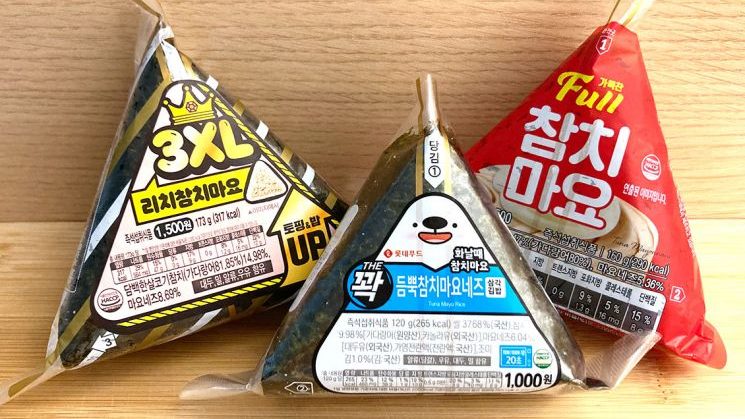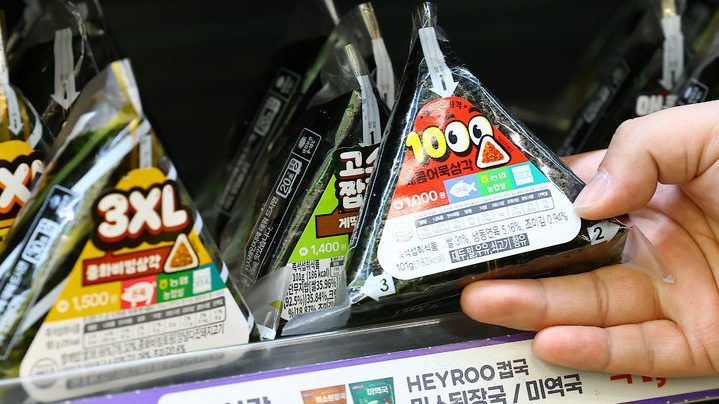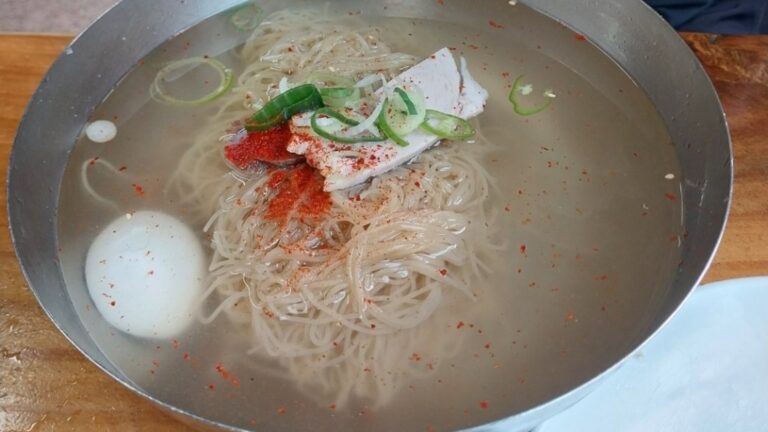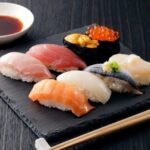If you’ve ever traveled to or lived in Korea, you’ve probably seen it at least once — the “Triangle Kimbap.”
It’s a triangular-shaped convenience store staple in Korea, similar to Japan’s onigiri (rice ball).
However, Korea’s triangle kimbap has a completely different personality from Japanese onigiri, filled with its own unique charm and flavor.

In this article, we’ll take a detailed look at the Korean triangle kimbap — still relatively unknown to many Japanese visitors — including its varieties, taste, packaging differences, reasons for popularity, and how to make the most of it during your travels!
What Is Triangle Kimbap?
~ A Korean-Style Rice Snack Different from Onigiri ~
“Triangle Kimbap” literally means triangular-shaped kimbap. While it looks similar to Japan’s onigiri (rice ball), its fillings and concept are quite different.
What Is Kimbap?
Kimbap is a popular Korean rice dish made by wrapping rice and various ingredients in dried seaweed (gim). It looks similar to Japanese rolled sushi (makizushi), but unlike sushi rice seasoned with vinegar, Korean kimbap is flavored with salt and sesame oil, giving it a distinct aroma and taste.
Triangle kimbap is a simplified, convenience store version of this beloved dish — designed for people to enjoy easily on the go.
You can find it in major convenience store chains such as GS25, CU, Seven Eleven, and Emart24 all across Korea, and it’s very affordable.
In short, it’s Korea’s classic “fast food for everyone.”
5 Key Differences Between Korean Triangle Kimbap and Japanese Onigiri
| Comparison | Korean Triangle Kimbap | Japanese Onigiri |
|---|---|---|
| Rice Seasoning | Salt and sesame oil (sometimes seasoned rice) | Usually plain white rice, lightly salted |
| Seaweed | Often seasoned or flavored seaweed | Usually plain roasted seaweed |
| Fillings | Spicy or stir-fried flavors | Fish, pickled plum, kelp, etc. |
| Packaging | Special numbered tear-open system (1-2-3) | Simple transparent wrap |
| Target Audience | Students, office workers, busy people | All age groups |
In Korea, triangle kimbap is loved as a quick hunger fix, breakfast alternative, or late-night snack in many daily situations.
Top 5 Popular Korean Triangle Kimbap Flavors
Korean triangle kimbap comes in a huge variety of flavors, with many unique fillings you won’t easily find in Japan. Here are five of the most popular ones:
- Tuna Mayo (참치마요)
The most classic and popular flavor — spicy mayo and tuna create a perfect balance. - Bulgogi (불고기)
Sweet and savory stir-fried beef that feels like a small meal on its own. - Kimchi Fried Rice (김치볶음밥)
Rice mixed with kimchi — spicy and rich in flavor. - Spam & Egg (스팸계란)
A salty yet soft combination, often loved by students. - Spicy Octopus (낙지볶음)
Recommended for those who enjoy heat — strong, bold, and addictive flavor.
Price & Portion: A Great-Value Snack
As of 2025, triangle kimbap typically costs ₩1,400–2,000 (about ¥160–230).
It’s slightly smaller than a Japanese onigiri, but the seasoned rice makes it satisfyingly flavorful.
Many convenience stores also run “1+1” promotions (buy one, get one free), making it an affordable and filling choice for students and solo travelers.
How to Open It: The Secret Behind Korean-Style Packaging
Each triangle kimbap package comes with numbers (1-2-3) printed on the wrapper.
By pulling in order — 1 → 2 → 3 — the plastic is removed cleanly, and the seaweed wraps around the rice right at the moment you open it.
This design keeps the seaweed crisp and prevents moisture from softening it — a feature rarely seen in Japan.
💡 Tip: If it’s your first time, search “How to eat Korean triangle kimbap” on YouTube — you’ll find helpful short videos!
Where to Buy: Major Convenience Store Chains
You can easily find triangle kimbap at:
- GS25
- CU
- 7-Eleven
- Emart24
Each brand offers its own flavor lineup and limited editions — it’s fun to visit different stores and compare flavors during your trip!
Recommended Situations for Travelers
Triangle kimbap is perfect for saving time and money while traveling:
- Skip hotel breakfast — grab one from a convenience store instead.
- Snack during bus or KTX train rides.
- A mild snack option when you’re tired of spicy Korean food.
- A convenient midnight snack before bed.
A Few Things to Keep in Mind
- 🔥 Spiciness varies — check for “매운맛” (spicy) on the packaging.
- ⚠️ Allergy info is in Korean — use a translation app if you have allergies.
- 🕒 Short shelf life — meant to be eaten the same day, so store carefully while traveling.
Bonus: Instagram-Worthy Packaging
Recently, triangle kimbap has become even more stylish — featuring character designs and brand collaborations.
These cute packages are popular among young people aiming for SNS-worthy photos.
Take a shot with a fun package and the hashtags #삼각김밥 #편의점간식 (#TriangleKimbap #ConvenienceSnack) —
a perfect memory from your Korean trip!
Summary: Triangle Kimbap — A Mini Taste of Korean Culture!
Korean triangle kimbap is more than just a convenience store snack — it’s a delicious reflection of Korean food culture.
It’s easy to eat, flavorful, and above all, filled with the unique essence of Korea.

Next time you visit Korea, be sure to stop by a convenience store and try a few different kinds to compare —
you’ll discover how much variety and creativity are packed into this small, triangular snack!
Table of Contents









